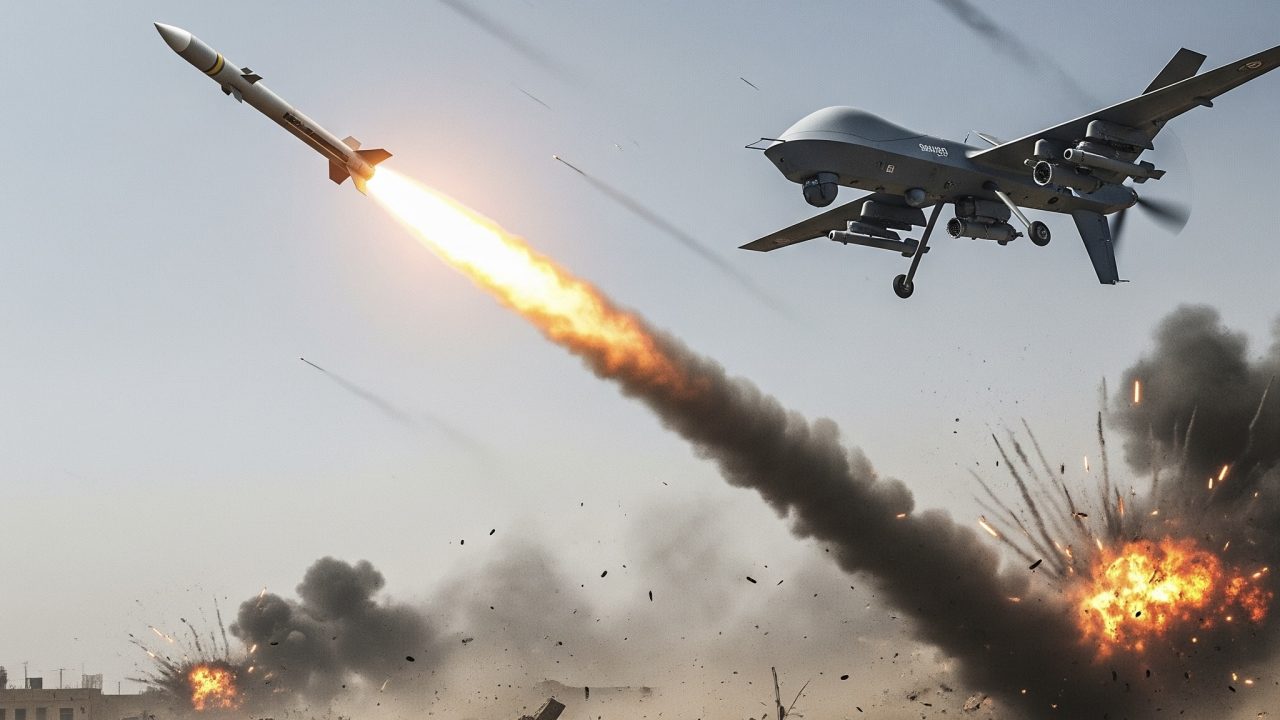Previously Russia positioned itself as a modern power able to cripple an adversary’s decision-cycle with carefully targeted precision-guided munitions. Three years of war in Ukraine have punctured that story. The Kremlin now relies on volume rather than accuracy, trading the prestige of “surgical” strikes for the blunt attrition of drone swarms and repurposed air-defence missiles. What follows traces that transition and asks what it does to Western analytical assumptions about technology, ethics and power.
From Surgical Imagery to Saturation Practice
Pentagon tallies show that Russian forces loosed more than one thousand one hundred guided missiles in the first month of the invasion, yet many exploded in apartment blocks rather than command nodes (Department of Defense, 2022). Domestic production never kept pace. By mid-2023 Russian factories were turning out roughly sixty new cruise missiles a month, a fraction of operational demand (Williams, 2023).
Facing depletion, Moscow shifted firepower architecture. S-300 surface-to-air missiles were redirected at ground targets, increasing miss distances, while Iranian-designed Shahed drones began to pad nightly salvos (Army Recognition, 2024). Guided-missile launches fell steadily while drone use soared, reaching an estimated total of four thousand deployed by the first quarter of 2025 (Atalan and Jensen, 2025). The identity of the high-tech precision striker gave way to the practicalities of magazine depth and industrial capacity.
Implications for Western Analysis
Western security discourse long treated accuracy as a twin proof of technical mastery and ethical restraint (Schmitt and Widmar, 2014; Wilson, 2020). Russia’s practice weakens both pillars. Norms endure through consistent observance and recognition; when a major power claims the vocabulary of precision while accepting wide error margins, the social meaning of accuracy erodes (Tannenwald, 2017).
The episode therefore offers a methodological caution. Counting missiles without attending to their symbolic weight risks analytical short-sightedness. The shift towards low-cost saturation munitions signals a recalibration of Russian strategic identity and alters the deterrence calculus of adversaries who must now defend against continuous drone attrition rather than episodic cruise-missile raids. Civilian resilience, alliance solidarity and arms-control expectations all pivot on how quickly that new reality is understood.
In Summary
Russia’s move from precision-guided missiles to mass bombardment is more than a supply-chain story. It marks the point where an identity built on technological finesse buckled under material constraint, transforming both the battlefield and the normative landscape around it. Analysts tracking future conflicts would do well to remember that weapons categories are not only hardware inventories but carriers of meaning, and that meaning can shift faster than production lines.
Bibliography
Army Recognition 2024. ‘Russia Repurposes S-300 Surface-to-Air Missiles for Ground Attacks Against Kharkiv’, 5 January.
Atalan, Y. and Jensen, B. 2025. Drone Saturation: Russia’s Shahed Campaign. CSIS Brief, 13 May.
Department of Defense 2022. ‘Pentagon Press Secretary John F. Kirby Holds a Press Briefing’, 21 March.
Schmitt, M. and Widmar, E. 2014. ‘On Target: Precision and Balance in the Contemporary Law of Targeting’. Journal of National Security Law and Policy, 7(3).
Tannenwald, N. 2017. ‘How Strong Are the Nuclear Taboo and the Chemical Weapons Ban?’ The Washington Quarterly, 40(1), 79–98.
Williams, I. 2023. ‘Russia Isn’t Going to Run Out of Missiles’. CSIS Analysis, 28 June.
Wilson, N. 2020. ‘The Ambiguities of Precision Warfare’, Intimacies of Remote Warfare commentary, 12 June.
